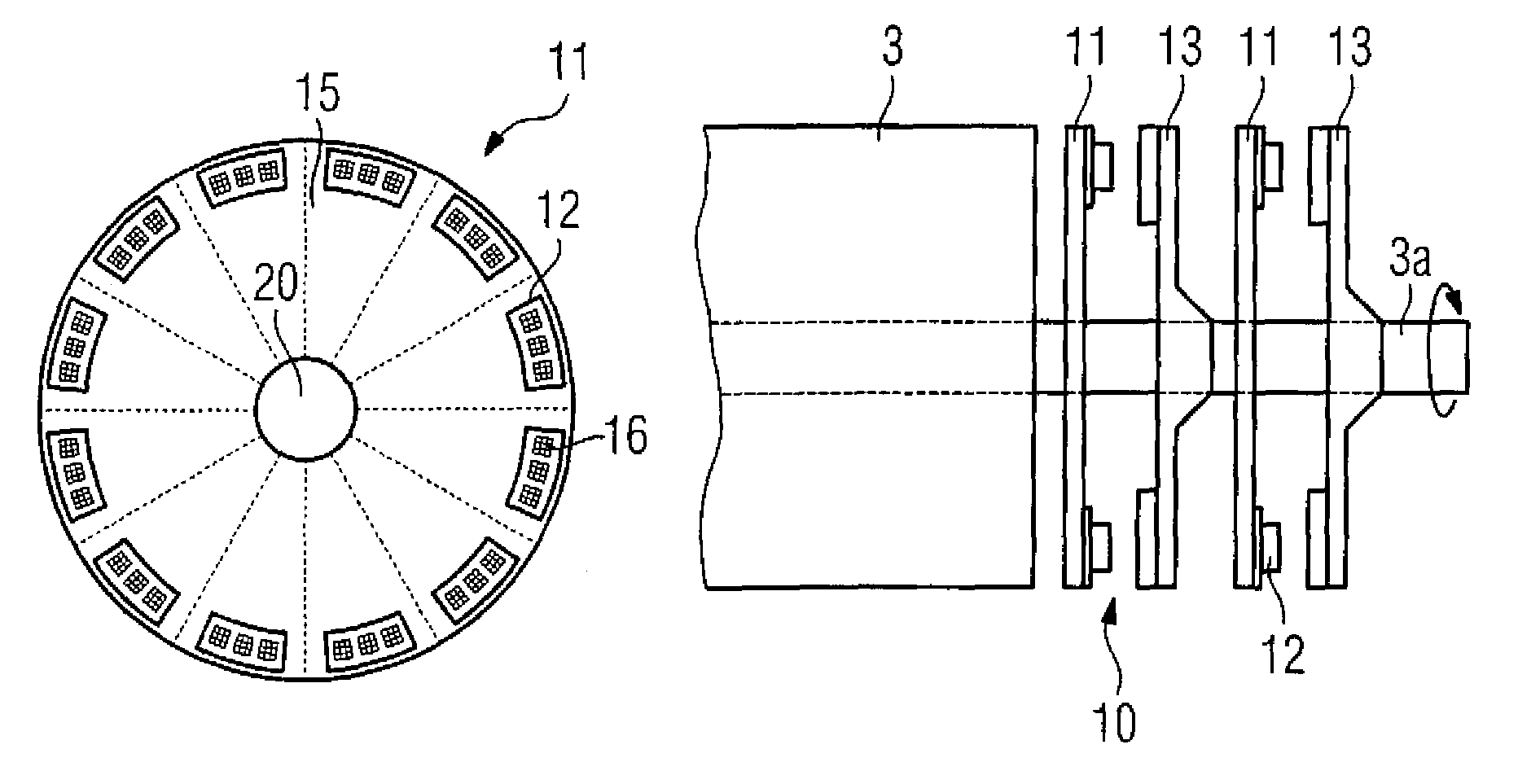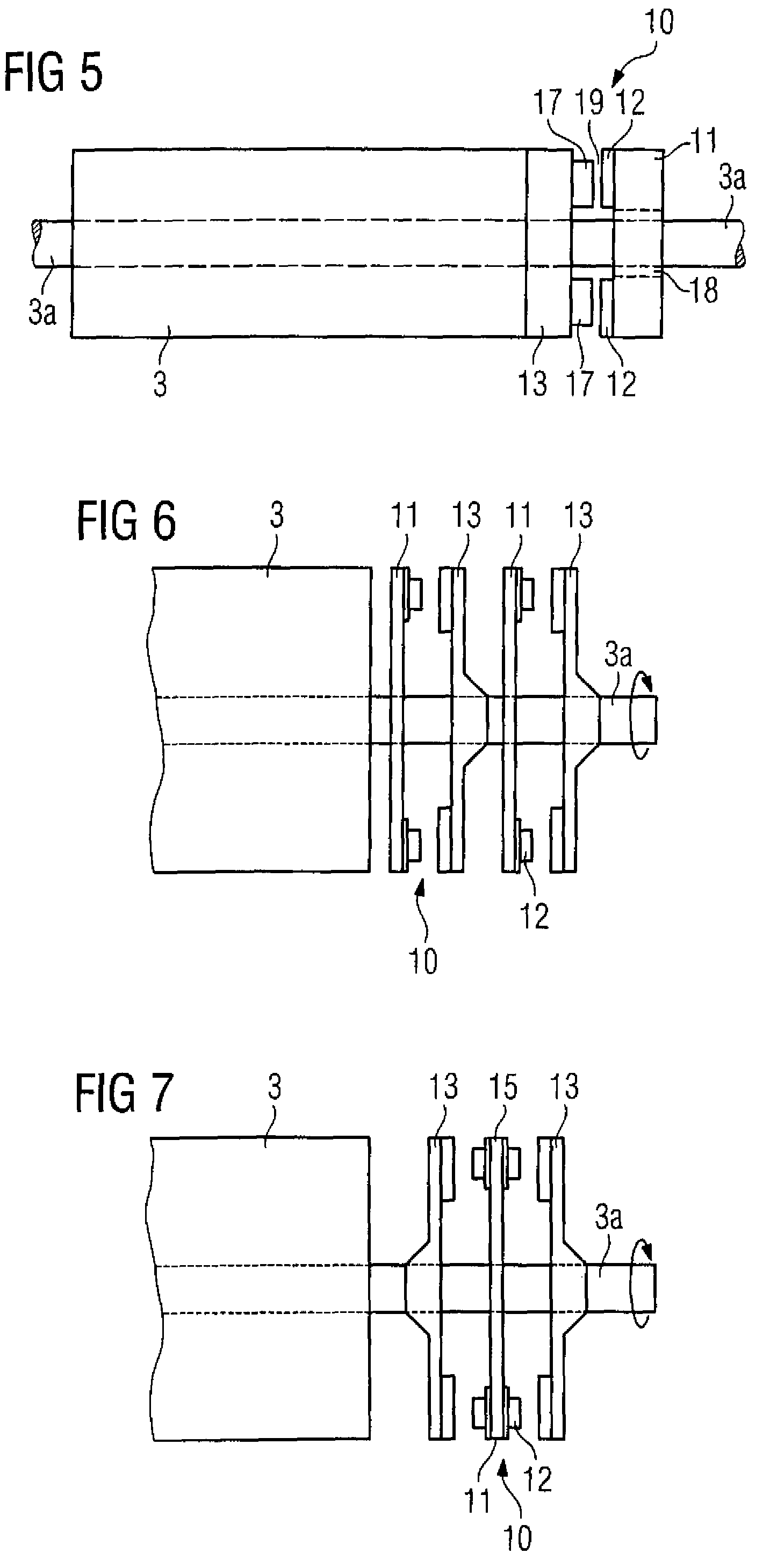Electrical direct drive for a roller
a direct drive and electric technology, applied in the direction of magnetic circuit rotating parts, mechanical energy handling, magnetic circuit shape/form/construction, etc., can solve the problems of high development cost of special motors, financial cost and time spent in the replacement of damaged gearboxes, etc., to avoid the cost of maintenance of a gearbox, avoid the effect of mechanical oscillation on the roller, and avoid the effect of development cos
- Summary
- Abstract
- Description
- Claims
- Application Information
AI Technical Summary
Benefits of technology
Problems solved by technology
Method used
Image
Examples
Embodiment Construction
[0029]Throughout all the figures, same or corresponding elements may generally be indicated by same reference numerals. These depicted embodiments are to be understood as illustrative of the invention and not as limiting in any way. It should also be understood that the figures are not necessarily to scale and that the embodiments are sometimes illustrated by graphic symbols, phantom lines, diagrammatic representations and fragmentary views. In certain instances, details which are not necessary for an understanding of the present invention or which render other details difficult to perceive may have been omitted.
[0030]Turning now to the drawing, and in particular to FIG. 1, there is shown a schematic illustration of a production machine, generally designated by reference numeral 1 and constructed as a continuous press for wood materials. The production machine 1 has four rollers 3 which operate by continuous or step-by-step pressure forming of the rolled item 2. The rolled item is, ...
PUM
 Login to View More
Login to View More Abstract
Description
Claims
Application Information
 Login to View More
Login to View More - R&D
- Intellectual Property
- Life Sciences
- Materials
- Tech Scout
- Unparalleled Data Quality
- Higher Quality Content
- 60% Fewer Hallucinations
Browse by: Latest US Patents, China's latest patents, Technical Efficacy Thesaurus, Application Domain, Technology Topic, Popular Technical Reports.
© 2025 PatSnap. All rights reserved.Legal|Privacy policy|Modern Slavery Act Transparency Statement|Sitemap|About US| Contact US: help@patsnap.com



